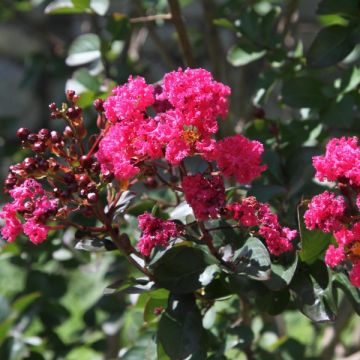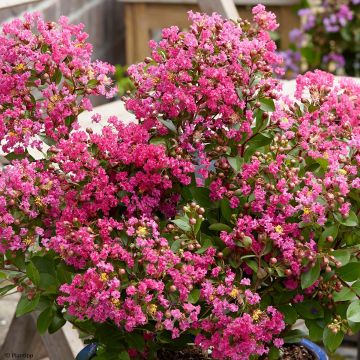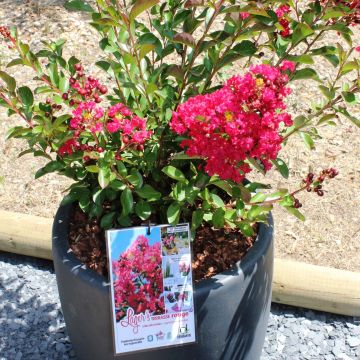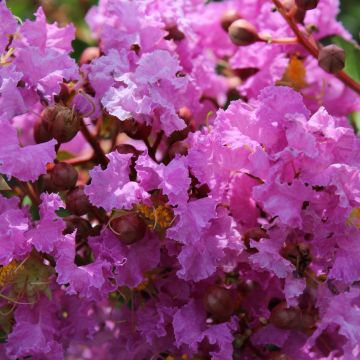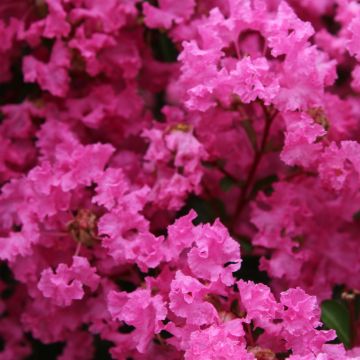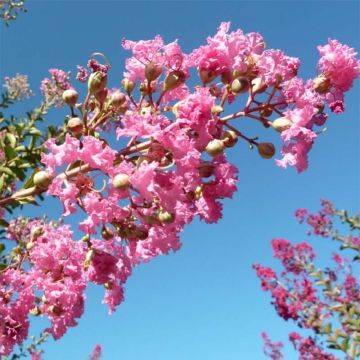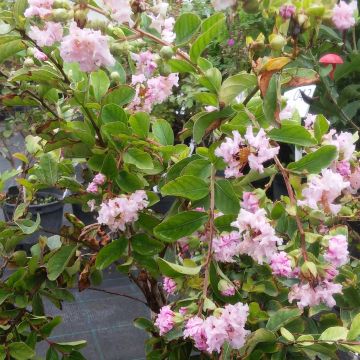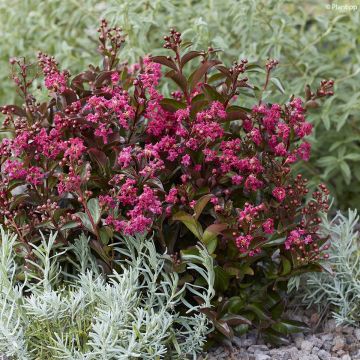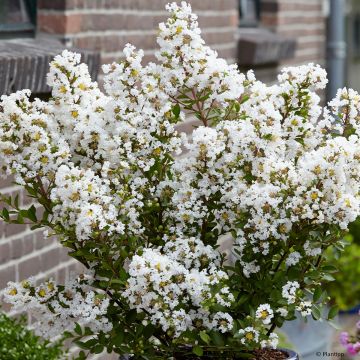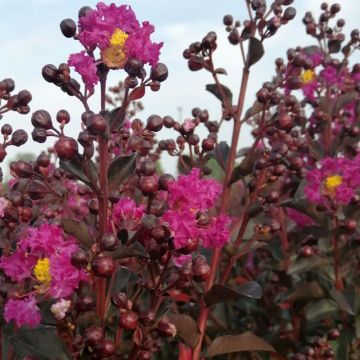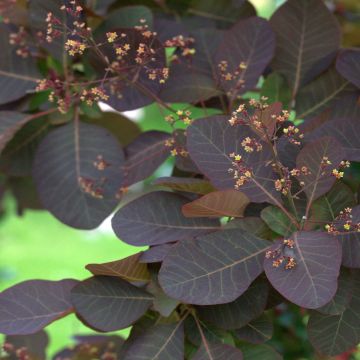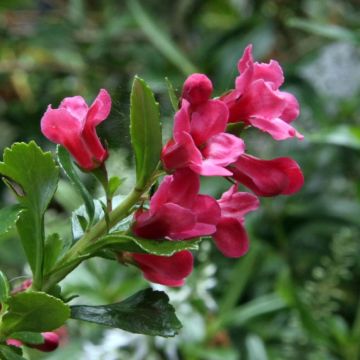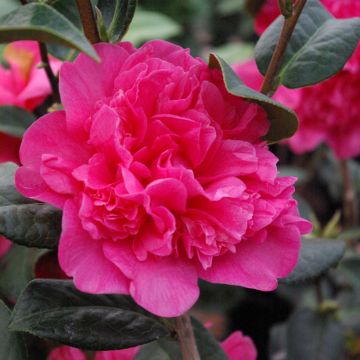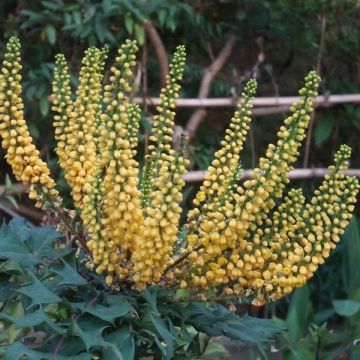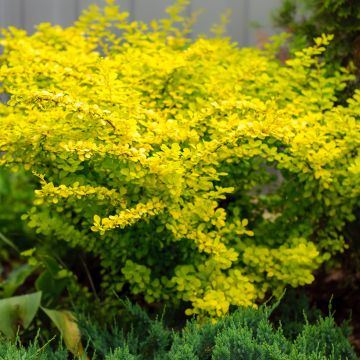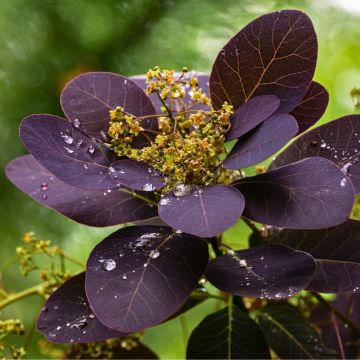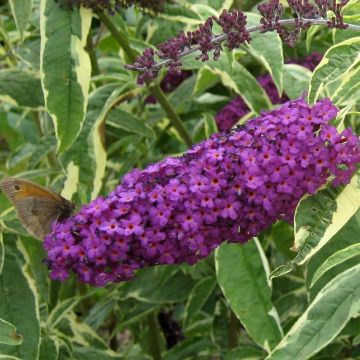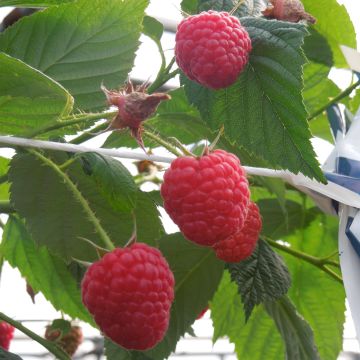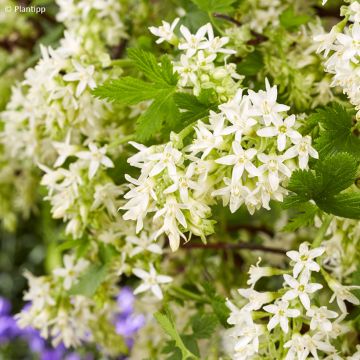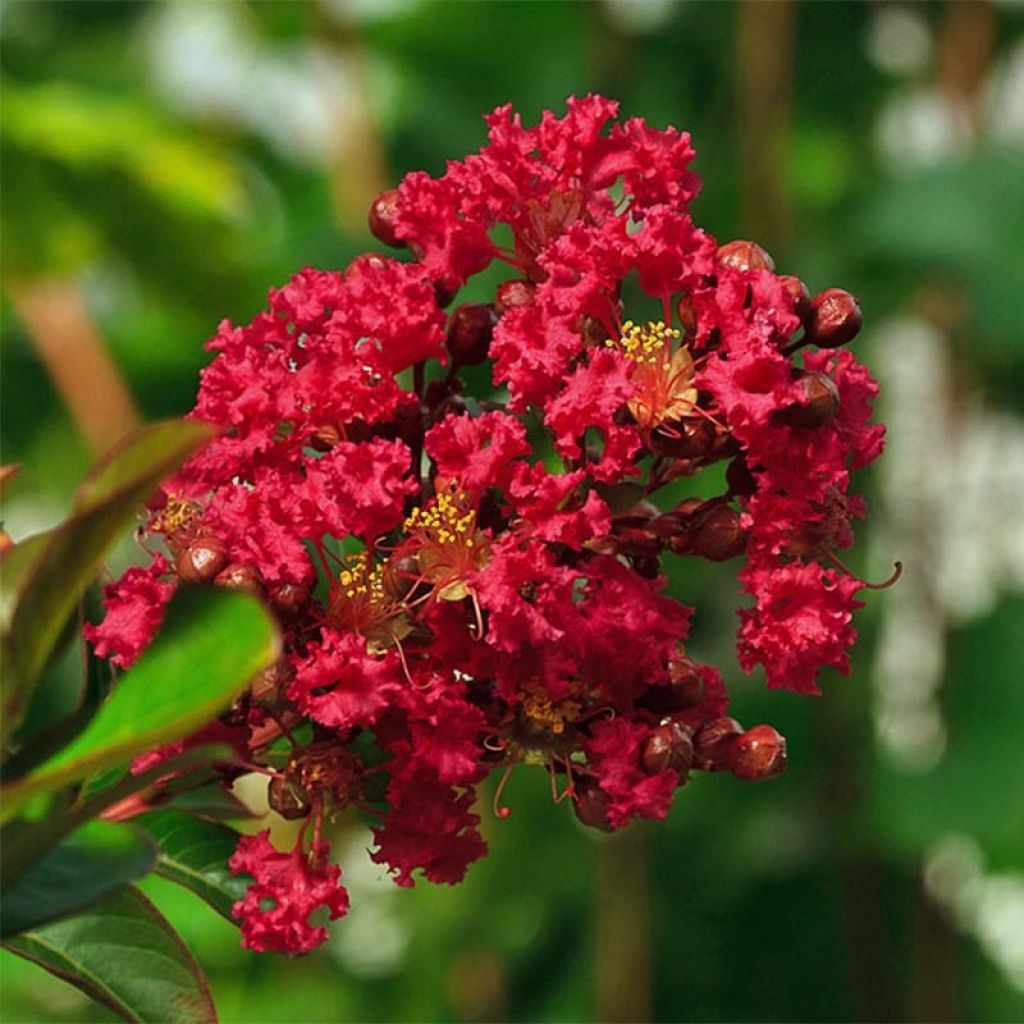

Lagerstroemia indica Rouge Nain - Lilas des Indes
Lagerstroemia indica Dwarf Red - Crape Myrtle
Lagerstroemia indica Rouge Nain
Crape Myrtle, Crepe Myrtle, Indian Lilac
The young plant is in good condition with some nice green leaves. The items were very well packaged in my opinion. Great idea to staple the pots to the cardboard, they are thus secured.
Isabelle, 17/10/2024
This item cannot be shipped to the selected country
Delivery charge from €5.90
Delivery to Corse prohibited
More information
Delivery charge from €5.90
Delivery to Corse prohibited
More information
Schedule delivery date,
and select date in basket
This plant carries a 24 months recovery warranty
More information
We guarantee the quality of our plants for a full growing cycle, and will replace at our expense any plant that fails to recover under normal climatic and planting conditions.
From €5.90 for pickup delivery and €6.90 for home delivery
Express home delivery from €8.90.
Delivery to Corse prohibited: UE law prohibits the import of this plant from mainland France to Corse as part of the fight against Xylella fastidiosa. Please accept our sincere apologies.
More information
Does this plant fit my garden?
Set up your Plantfit profile →
Description
The Lagerstroemia indica 'Dwarf Red' is a variety of Indian lilac with a spread and compact habit and a beautiful bright red, punctate with yellow stamens summer flowering. Also selected for its good disease resistance, this small deciduous bush with a ball of flowers look will work wonders in a large pot on the terrace, but also in a rock garden or in the centre of a low perennial bed. It should be placed in a warm and sheltered location with full sun exposure, in neutral to acidic soil.
The Lagerstroemia indica 'Dwarf Red' belongs to the Lythraceae family. The Lagerstroemia indica, from which it originates, is native to China. This variety is still not widely distributed in the trade. This bush has a compact and spreading habit. It will reach approximately 1 m (3 ft 4 in) in height and 1.50 m (4 ft 11 in) in spread at ripeness. Its growth is slow. It generally starts flowering in the month of July and will continue through until autumn. The flowers are characterised by thin pedicels each carrying five undulate-edged petals. The flowers, whose texture is reminiscent of crepe, are gathered in dense panicles, at the end of the year's branches. In 'Dwarf Red', the flowers are bright red with a heart of golden yellow stamens. The foliage, tough and deciduous, is bright green bordered with red. It consists of small ovate leaves, which sometimes take lovely yellow or red shades in the autumn, depending on the climate. Finally, and to finish off in beauty, its bark is of all beauty, smooth, beige striate with brown-red, peeling off in coloured plates (cinnamon, faded red, old pink, cream).
Indian Lilacs traditionally make the glory of South-Western gardens. Varieties like 'Dwarf Red' bring these fantastic little trees within the reach of all gardens and all sunny terraces. Of modest pruning, bushy and floriferous, we will adopt it by carefully choosing its location. In the garden, placed in a rockery, or installed in the centre of a low bed, near the house, you can fully enjoy this plant's generosity. It will look good in front of a bush bed, a flowering hedge. Compose a bed like a bouquet, with Campanula pyramidalis, Salvia sclarea, Aster laevis. A colourful bush in the autumn, this plant can well accompany the aster. In a pot on the terrace, it puts on a show as the summer flowerings falter.
NB: Karl Von Linnaeus named this tree to honour his friend Magnus Von Lagestroem (1696 – 1759), who had sent it to him from India for identification. Originally, this tree was used to decorate Chinese temples. We would like to point out that this tree produces fruits that have a narcotic action in case of ingestion.
Lagerstroemia indica Dwarf Red - Crape Myrtle in pictures
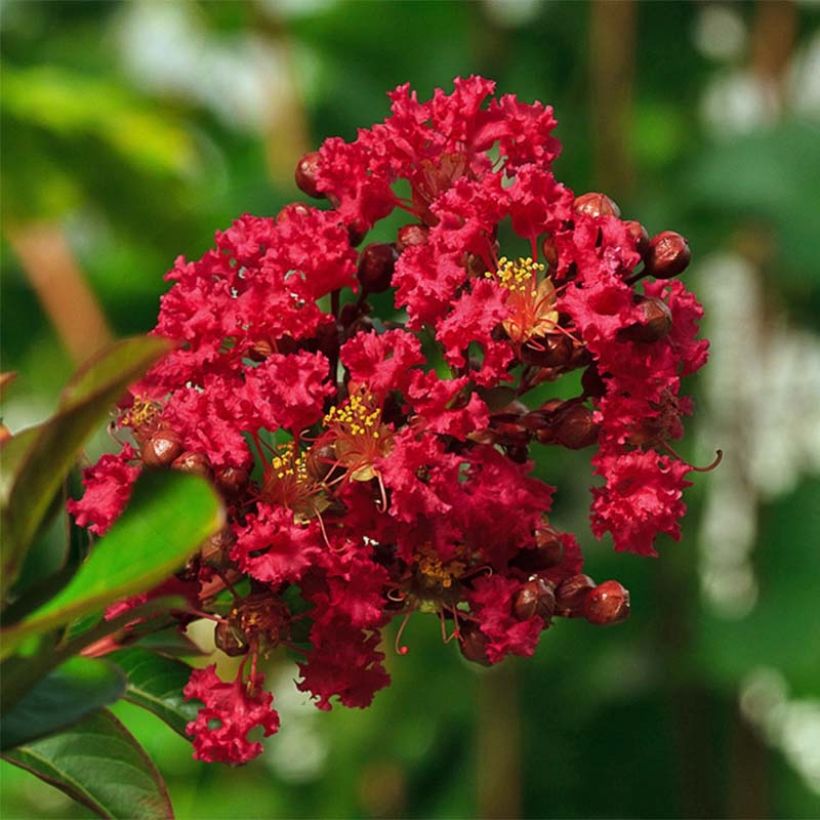

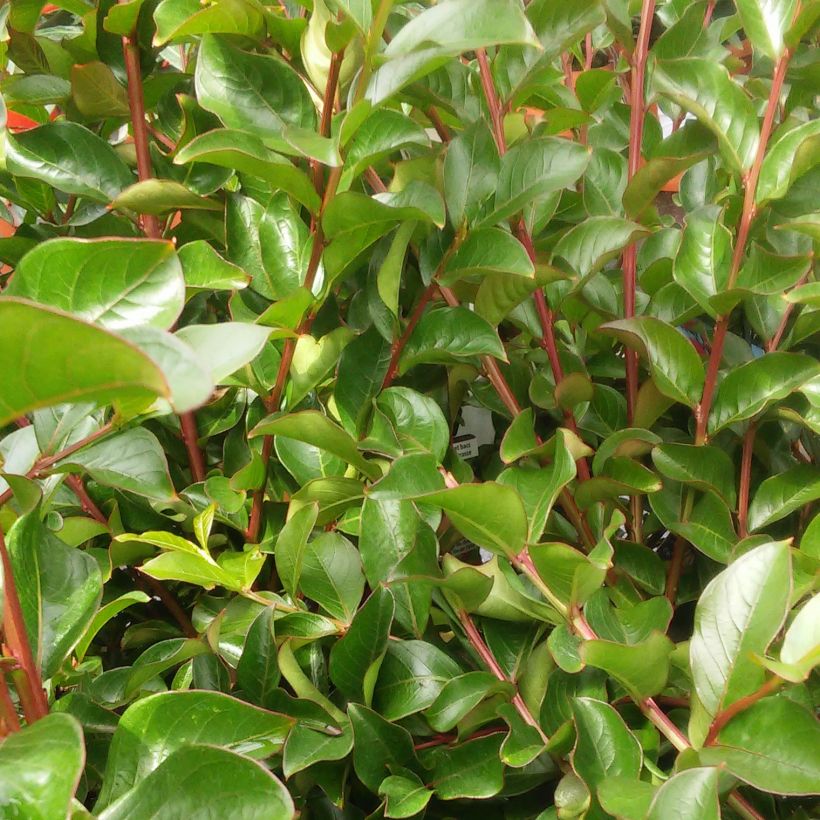

Plant habit
Flowering
Foliage
Botanical data
Lagerstroemia
indica
Rouge Nain
Lythraceae
Crape Myrtle, Crepe Myrtle, Indian Lilac
Cultivar or hybrid
Other Lagerstroemia - Crape Myrtle
Planting and care
We advise you to plant the Lagerstroemia indica 'Dwarf Red' in spring, when frosts are no longer to be feared, in a very sunny and sheltered situation, in rich soil, rather fresh, well drained and if possible slightly acidic, neutral or slightly calcareous. It will appreciate a contribution of compost and a thick layer of dead leaves, especially during the first two winters in cold regions. It is necessary to prune the floriferous branches very short in February-March, leaving only 4 to 6 buds to balance its branches and stimulate the growth of future flower-bearing branches. If necessary, remove weak twigs and poorly positioned branches.
Planting period
Intended location
Care
Hedge shrubs
Haven't found what you were looking for?
Hardiness is the lowest winter temperature a plant can endure without suffering serious damage or even dying. However, hardiness is affected by location (a sheltered area, such as a patio), protection (winter cover) and soil type (hardiness is improved by well-drained soil).

Photo Sharing Terms & Conditions
In order to encourage gardeners to interact and share their experiences, Promesse de fleurs offers various media enabling content to be uploaded onto its Site - in particular via the ‘Photo sharing’ module.
The User agrees to refrain from:
- Posting any content that is illegal, prejudicial, insulting, racist, inciteful to hatred, revisionist, contrary to public decency, that infringes on privacy or on the privacy rights of third parties, in particular the publicity rights of persons and goods, intellectual property rights, or the right to privacy.
- Submitting content on behalf of a third party;
- Impersonate the identity of a third party and/or publish any personal information about a third party;
In general, the User undertakes to refrain from any unethical behaviour.
All Content (in particular text, comments, files, images, photos, videos, creative works, etc.), which may be subject to property or intellectual property rights, image or other private rights, shall remain the property of the User, subject to the limited rights granted by the terms of the licence granted by Promesse de fleurs as stated below. Users are at liberty to publish or not to publish such Content on the Site, notably via the ‘Photo Sharing’ facility, and accept that this Content shall be made public and freely accessible, notably on the Internet.
Users further acknowledge, undertake to have ,and guarantee that they hold all necessary rights and permissions to publish such material on the Site, in particular with regard to the legislation in force pertaining to any privacy, property, intellectual property, image, or contractual rights, or rights of any other nature. By publishing such Content on the Site, Users acknowledge accepting full liability as publishers of the Content within the meaning of the law, and grant Promesse de fleurs, free of charge, an inclusive, worldwide licence for the said Content for the entire duration of its publication, including all reproduction, representation, up/downloading, displaying, performing, transmission, and storage rights.
Users also grant permission for their name to be linked to the Content and accept that this link may not always be made available.
By engaging in posting material, Users consent to their Content becoming automatically accessible on the Internet, in particular on other sites and/or blogs and/or web pages of the Promesse de fleurs site, including in particular social pages and the Promesse de fleurs catalogue.
Users may secure the removal of entrusted content free of charge by issuing a simple request via our contact form.

































